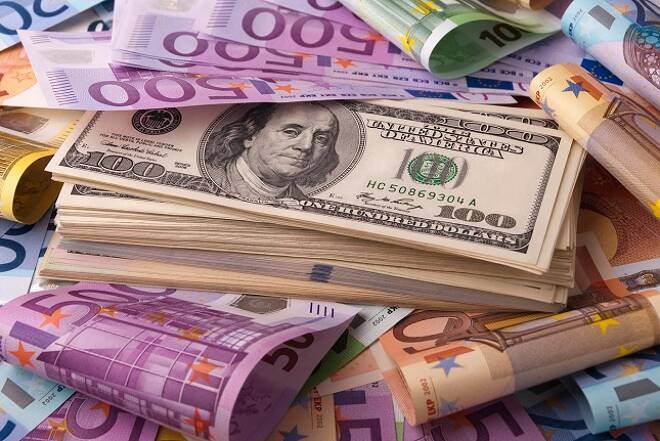Advertisement
Advertisement
EUR/USD Monthly Forecast – January 2019
By:
The forecast for the month in single phrase could be said as possibility for two way move with neither side having higher probability to make a signature trend chance price move.
Overall the three quarters of financial year 2018-19 was highly bearish for European common currency. The price action was highly volatile despite long term bearish outlook as market was mostly news and event driven which also caused a fundamental bearish influence for EURO in broad market. There were both local and international factors which influenced the price action and a few events and news which had greater impact than most others are listed below. The local events in European markets are:
- Brexit
- Italian Budget Crisis
- German Political Proceedings Which Saw Chancellor Merkel lose Influence
- French Yellow Vest Protests
While international events which had impact on European market are:
- European Auto Tariff’s Imposed by US Government
- Sino-U.S Trade War
- Crude Oil Price Decline Following US Tariff’s Levied on Iran
Global markets are currently experiencing a slowdown in growth pace which was initiated following US President Trump’s attempts to impose American greatness on other countries via his America first approach.This combined with US Federal Reserve’s decision to hike interest rates multiple times in 2018 greatly affected the price action of EURUSD pair. While US Greenback managed to retain its upper hand against Euro and other major currencies at close of December 2018, Euro regained some ground owing to concerns of global economic slowdown and Ongoing Political & Economic crisis in US which combined with Fed’s plans to hike interest rates twice in 2019 greatly impeded Greenback’s bulls provided the common currency some breathing space and positive influence despite lack of apparent fundamental support.
Fed Forward Guidance & T.Yield Curve Inversion Added Bearish Influence To USD
The month of December saw European Central Bank follow through on its Quantitative Easing plan which was terminated as per prior announcement. The first week of December saw EURO bulls gain positive headwinds over news of successful G20 Leaders’ Summit which saw US President Donald Trump and China’s Xi Jinping agree to postpone further tariff hikes for an extra 90 days as the two sides returned to the negotiating table. Ahead of December rate hikes concerns of slowdown in US economy resulted in US T.Yeild curve inversion which also hampered progress of US Greenback against EURO and other major global currencies. News of positive proceedings in EU-Italy budget negotiations following comments from Italy’s Deputy Prime Minister Luigi Di Maio also supported EURO. But upside was capped owing to increased demand for safe haven asset on renewed Sino-U.S trade tensions on arrest of top executive of Chinese telecommunications firm Huawei Technologies in Canada on request from USA.
The second week of December saw the pair move range bound as tensions from both side of Atlantic limited any major upside and downside move. Euro experienced bearish influence on news of Brexit fallout in UK which saw PM May pull out of parliamentary approval of EU approved deal owing to heavy opposition for deal in UK, but weak US macro data which increased concerns of slowdown in US economy cushioned Euro’s downside move. News of Huawei’s executive released on bail & US President Donald trump’s comments stating he will intervene in issue of Huawei if solid progress can be made in Sino-U.S. negotiations inspired some level of risk appetite keeping the pair locked in range bound price action. Weak Euro area macro data and US Treasury Yields recovering from curve inversion ahead of December FOMC update helped Greenback find some demand in early half of third week despite investors exercising caution ahead of US Fed forward guidance. The Fed forward guidance hinted at two rate hikes in 2019 while investors were expecting Fed to pause rate hikes over ongoing slowdown in US economy as visible from macro data. This caused US Treasury yield to resume curve inversion and greatly affected Greenback‘s short to medium term outlook helping Euro make significant gains against US Greenback.
January Likely To See Two Way Price Action Amid News Filled Calendar Schedule
The last week saw greenback lose even more ground against common currency on news of partial shutdown in US Government owing to President Trump’s Tantrums against congress over their lack of readiness to allocate funds to build border wall. This combined with investors taking cautious stance ahead of holiday season which created lack of market impacting news greatly affected volatility in market amid thin trading volume. As majority of markets across globe were closed for holiday season neither side could made any solid progress resulting in range bound price action with EURO bulls managing to maintain bullish bias in market. However news of high Christmas sales than usual from Mastercard Inc., prompted USD to recover some lost ground. Overall though, EURO managed to close positive for the month preserving much of gains from early December as trading session closed for third quarter. Moving forward, the pair is expected to experience high level of volatility owing to much of above mentioned political issues in local and international fronts remaining unresolved. Early half of month will see flood of headlines owing to new congress swearing in during first week of January shortly followed by Brexit deal approval resuming in UK Parliament along with vote of no-confidence on PM Theresa May owing to her intentional sabotage of Brexit proceedings. We will also get to see US government and Fed’s reaction to slowdown in US economy which combined with all above mentioned events are expected to keep both sides of EUR/USD pair waging war for upper hand providing traders with plenty of short and medium term profit taking opportunities.
About the Author
Colin Firstauthor
Colin specializes in developing trading strategies and analyze financial instruments both technically and fundamentally. Colin holds a Bachelor of Engineering From Milwaukee University.
Advertisement
